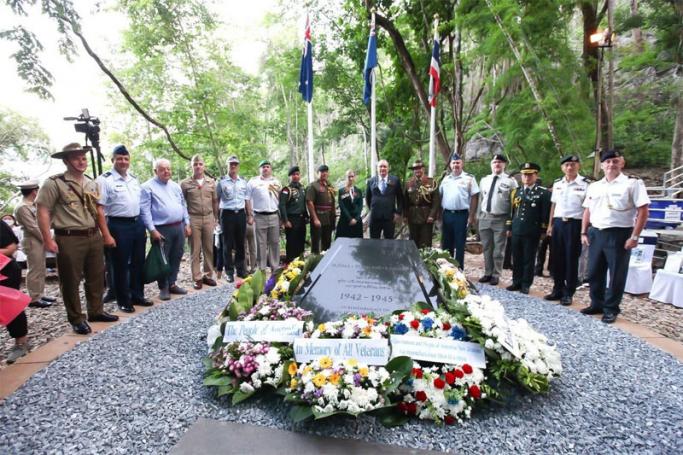The Australian and New Zealand embassies held their annual Dawn Service and Gunfire Breakfast celebration of Anzac Day at Hellfire Pass on the Burma Thailand railway, built by forced labour in World War II.
For the first time in three years the public was allowed to attend the ceremony.
The Burma railway, also known as the Death railway ran 415 km between Ban Pong in Thailand and Thanbyuzayat in Burma. It was built between 1940 and 1943 by the Japanese invaders using the forced labour of between 180,000 and 250,000 civilian labourers and over 60,000 Allied prisoner’s of war (POWs). Of those, about 90,000 South East Asian civilians and 12,000 POWs died during the construction.
Hellfire Pass is about 80km north west of Kanchanaburi Town in Thailand. Also known as Konyu Cutting it was the deepest and longest cutting along the entire length of the line. It was nicknamed Hellfire Pass because it looked like hell at night when the workers were forced to toil in the light of oil lamps and bamboo fires.
Over 22,000 Australians captured by the Japanese forces in early 1942 were forced to work on the railway with more than a third of them dying in captivity. This represents 20 percent of all Australian deaths during World War II and is a central part of Australia’s national memory.
The Australian captives were part of hundreds of thousands of Allied servicemen captured by the Japanese forces during World War II.
The dawn service was held at the memorial plaque, perched high in the forest canopy and overlooking the great expanse of the jungle.
Australian Ambassador Allan McKinnon said of those who suffered and died there: “Their proud legacy of mateship, endurance, courage and self-sacrifice lives on and inspires Australians of all generations. Lest we forget.”
Melissa Haydon-Clarke, New Zealand’s chargé d’affaires for Thailand, Laos and Cambodia, said: “In the face of a manifest reminder of the appalling human cost of war, Anzac Day is an opportunity to honour the memory of all those who have sacrificed so much in the pursuit of freedom, peace and justice by re-dedicating ourselves to those ends.”
ANZAC Day is a time for Australians to recognise all service men and women, and to remember those who sacrificed their lives for their country in both World Wars and more recent conflicts.
Few of the surviving veterans of the railway building are alive today. But it is felt important to remember the sacrifices of the service people who laboured in appalling conditions on the project.












